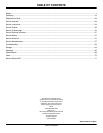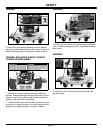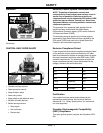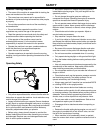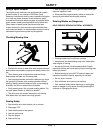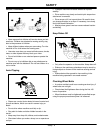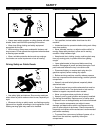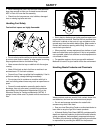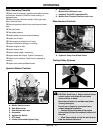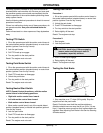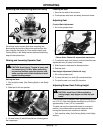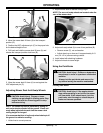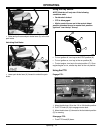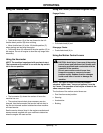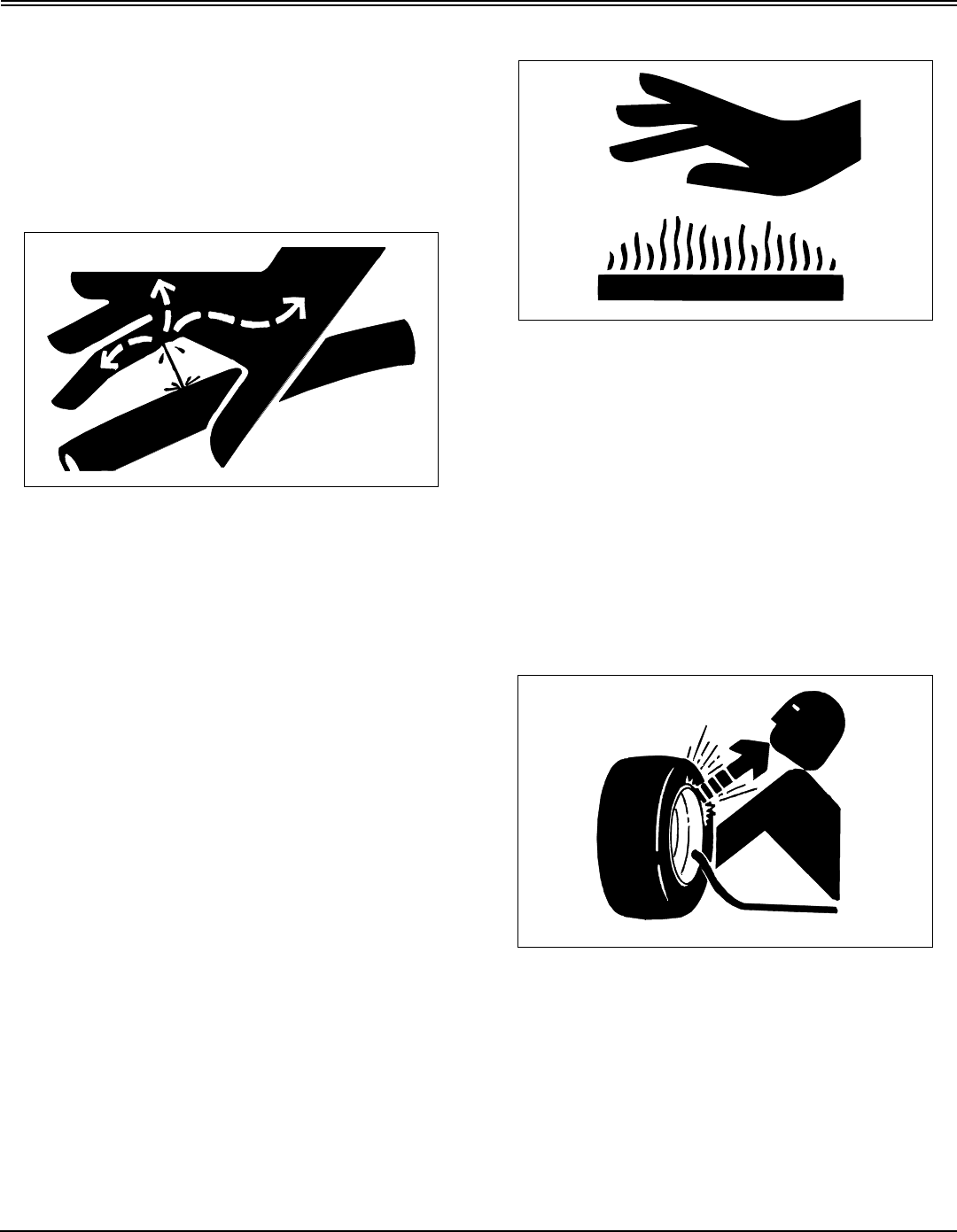
Safety - 8
SAFETY
• Charge batteries in an open, well-ventilated area, away
from sparks. Unplug battery charger before connecting or
disconnecting from the battery. Wear protective clothing
and use insulated tools.
• Do not modify machine or safety devices. Unauthorized
modifications may impair its function and safety.
Avoid High-Pressure Fluids
MIF
• Hydraulic hoses and lines can fail due to physical
damage, kinks, age, and exposure. Check hoses and lines
regularly. Replace damaged hoses and lines.
• Hydraulic fluid connections can loosen due to physical
damage and vibration. Check connections regularly.
Tighten loose connections.
• Escaping fluid under pressure can penetrate the skin
causing serious injury. Avoid the hazard by relieving
pressure before disconnecting hydraulic or other lines.
Tighten all connections before applying pressure.
• Search for leaks with a piece of cardboard. Protect
hands and body from high-pressure fluids.
• If an accident occurs, see a doctor immediately. Any
fluid injected into the skin must be surgically removed
within a few hours or gangrene may result. Doctors
unfamiliar with this type of injury should reference a
knowledgeable medical source.
Prevent Fires
• Remove grass and debris from engine compartment
and muffler area, before and after operating machine,
especially after mowing or mulching in dry conditions.
• To reduce fire hazard, keep engine and engine
compartment free of grass, leaves, or excessive grease.
• Allow engine to cool before storing in any enclosure.
• Never remove fuel cap, or add fuel with engine running
or hot. Allow engine to cool for several minutes.
• Never store equipment with fuel in the tank inside a
building where fumes may reach an open flame or spark.
Tire Safety
MIF
Explosive separation of a tire and rim parts can cause
serious injury or death:
• Do not attempt to mount a tire without the proper
equipment and experience to perform the job.
• Always maintain the correct tire pressure. Do not inflate
the tires above the recommended pressure. Never weld or
heat a wheel and tire assembly. The heat can cause an
increase in air pressure resulting in a tire explosion.
Welding can structurally weaken or deform the wheel.



